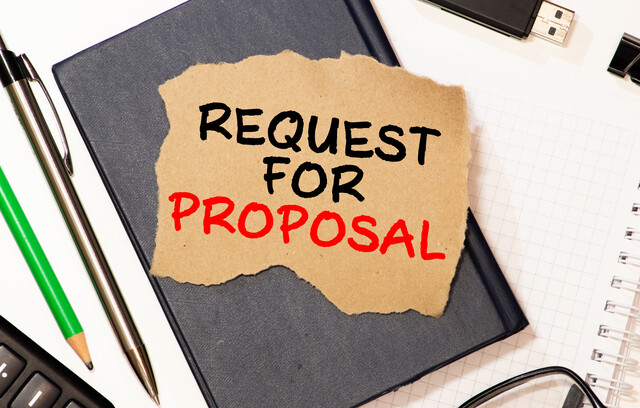The list of absolute musts has to be pretty short. Think about it this way: Your wife (or husband, or domestic partner, or close friend) asks you to go to the grocery store to pick up a dozen eggs. You grab your keys and head for the door. As soon as you reach the door, however, she (or he) stops you. "Wait--we need some milk, too. And a loaf of bread."
Okay, you are fine remembering eggs, milk and bread. But if the list gets too much longer, you will have to write it down or you are likely to forget something.
So when you are organizing your central points, it's a great idea to start by brainstorming ideas. You can write down every concept related to your topic that you would like for them to remember. At this stage, it may be most useful to simply scribble notes on a piece of paper, like a mind map, instead of trying to get overly organized at this early stage. Write down whatever occurs to you. Don't edit yourself; just throw things out on paper. All this information is already inside you because of all the research and preparation you have already done, so this activity should not take more than 10 minutes of your time. Don't try to be neat; the purpose is to get your ideas on paper. Neatness will come later.
After you have everything on paper, what you are faced with is a mass of ideas. Next, you will need to focus and prioritize all those concepts. Think of your central concepts as a grocery list of the things you absolutely must have. You don't want to bog your attendees down with a list of 20 items. They won't remember them all, and they might end up forgetting the ones that are the most important.
Once you have selected your five main points (or less), consider writing them down in a table form, as shown below.
1. You'll be less tired in the morning
2. You will feel better at school
3. You will have more time to eat breakfast if you don't oversleep
4. You'll be in a better mood at school
5. You need sleep to grow
Notice how all the five reasons are focused on the benefit to him, because I am trying to persuade him, and to sell the idea. I have my own reasons, of course, which include not wanting to have to struggle with waking him up every morning. But since this is salesmanship, he's not going to care about my reasons.
A word on audience analysis: In order to construct an effective argument, you must understand your audience. For example, the Board of County Supervisors may feel very badly that your favorite campground is about to be made into 300 tract homes, but if your protest is 10 minutes of a purely emotional appeal, you are likely to lose a very good opportunity.
Understand who you are talking to, what motivates them, and what it is within their power to do. Analyze arguments that have succeeded in the past with your audience, and figure out which key points will mean the most to them in this situation.
Organizing these five reasons next to each other instead of as a list helps visualize them along the same line. This technique helps prevent very visual people from associating a rank with these ideas--we aren't quite ready to prioritize them just yet.
When you look at the list, you may notice that some of the ideas are pretty much the same, and you can lump some concepts under others, which helps pare down the list of central ideas even further.
1. You'll be less tired in the morning
a. You will feel better at school
b. You'll be in a better mood at school
2. You will have more time to eat breakfast if you don't oversleep
3. You need sleep to grow
So now, all I have to remember are three basic points. When I'm finished having this conversation with my son, he only has three major things to recall.
Next, in order to help keep these concepts organized and to keep me from bouncing all over the place, I would want to pick a theme. Hopefully, your central points suggest a basic theme: in this case, my theme would be "You will feel better and grow taller if you get to sleep at a decent hour."
My theme would become the title of my presentation, and I would refer back to it a couple of times while I was speaking. I would state the three basic concepts, the absolutely must remember arguments during the introduction and the conclusion, and develop them further within the body of the presentation.
That leads me to the next step: filling out the details under each main point.
You'll feel better
You will have more time to eat breakfast if you don't oversleep
You need sleep to grow
You will be more able to pay attention to your teacher and will learn better
Studies show students who eat breakfast do better in school
You are heading into the major growing years of your life
You'll be in a better mood at school
You won't be so hungry before lunchtime
Explanation of research showing the relationship of sleep to growth
You'll be less tired in the morning
You'll be able to concentrate better during class if your stomach isn't growling
Your goal is to be a pro basketball player--so you will need to be taller than four feet
The purpose of developing your outline in this grid form instead of in a list is to help you keep a little flexibility in your presentation. Now that you have outlined your whole argument, you can look over it at a glance, from side-to-side and top-to-bottom, all on one page. With this concise view, you can easily prioritize which argument is most important to this particular audience, and you can also organize the supporting facts in order of importance. If you have put this information together with the help of word processing or spreadsheet software, you can move your arguments around with a little cut-and-paste action. If you hand-wrote them, of course you can re-write to move them around.
Some people just don't believe in preparing a formal script for a presentation. If you have given the same presentation a thousand times, it is entirely possible you could give an outstanding presentation based only on your outline. For expert presenters, this strategy works well. However, if you struggle with making presentations, if you are nervous, or if it is absolutely essential that you make a great impression, then writing out the script is a great idea. More than likely, you won't follow the script word-for-word during your presentation, but knowing what you want to say will ensure that you say everything you need to.
Of course, there are all kinds of ways to present, but a simple formula is to include an Opening, Body, Summary, Q&A, and Closing in every speech.
The opening is where you explain "what has happened/what needs to happen." Then you can quickly state the purpose of the day's meeting. State the main concepts that your attendees absolutely must remember. Depending on the amount of time you have, your opening may take several minutes, or it can just be a few sentences long. If I were presenting my previously described argument about why my son should go to bed on time, my opening would be very short.
Example (using the bedtime argument)
-
State the problem: You have been staying up too late playing your handheld games. As a result, you are oversleeping in the morning and feeling tired in school.
-
State what needs to happen: This needs to stop so that you can perform better in school.
-
Purpose of the meeting: In the next 10 minutes, I am going to explain to you how getting more sleep can improve your life.
-
Statement of the key arguments: You will feel better, you will have more time to eat breakfast, and you will be able to grow more.
Once I have that all written out, I can choose to dress the basic verbiage up and make it into real sentences, in a kind of language that is appealing and appropriate to my son (the audience). The degree of pre-planning I do depends on the amount of time I have for the actual presentation and how much I plan to use my notes. For the purposes of this exercise, I am going to assume we want to keep things simple and not get very flowery. That will make it easier to remember what needs to be said, and will avoid dependency on written notes.
When you wrote papers in high school, you knew you had to follow a logical flow from one point to the next or your paper would appear disjointed. When giving a presentation, there is a great added benefit to having a strong logical flow from one concept to the next: it makes it easier for you to remember what you have to say! Classical rhetoric teachers used to advise their students to think of their speech as a house, and each part of the speech was a room in that house. You would enter through the foyer, which was the introduction, then move into the kitchen (you will get to eat breakfast), the living room (you will be in a better mood) and the bedroom (you grow more when you sleep more).
Another technique that can help you structure your presentation so that it is both more logical for the listener and easier for you to follow is to construct strong transitions from one segment to the next. To do this, look through your argument grid and see how one idea relates to the next. Unless you are giving a presentation about completely random ideas, chances are good you'll be able to connect the dots. In the example of my son's bedtime argument, flowing from being able to eat breakfast in the morning into growing more allows a transition like, "another effect of being well-fed is that your body is able to take all those nutrients and put them to work helping you grow--but in order to make that happen, you need quality sleep time."






























